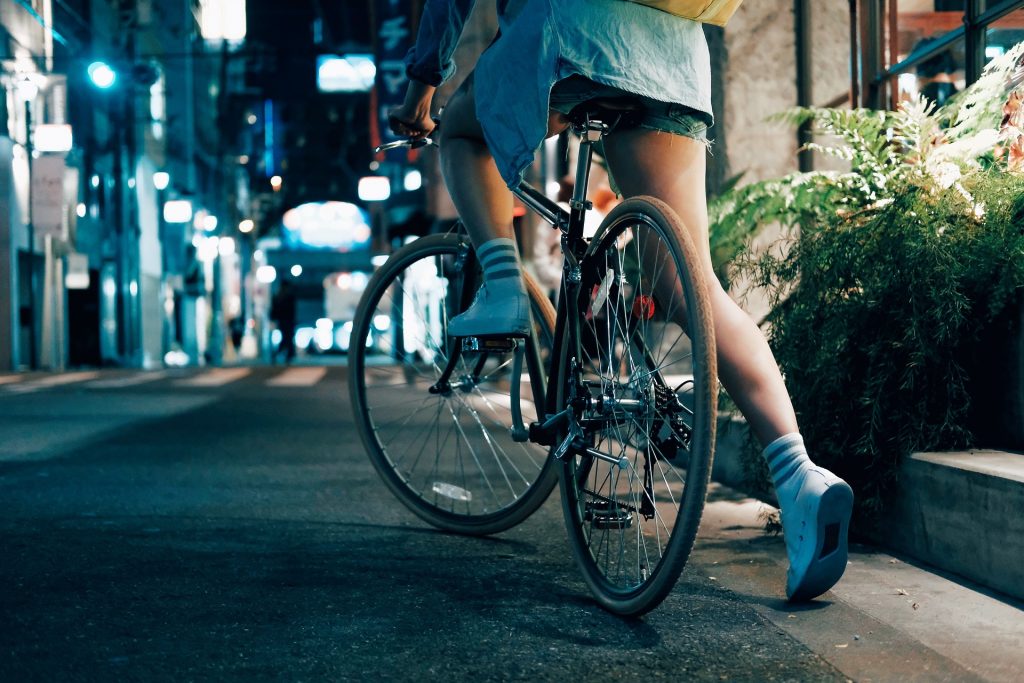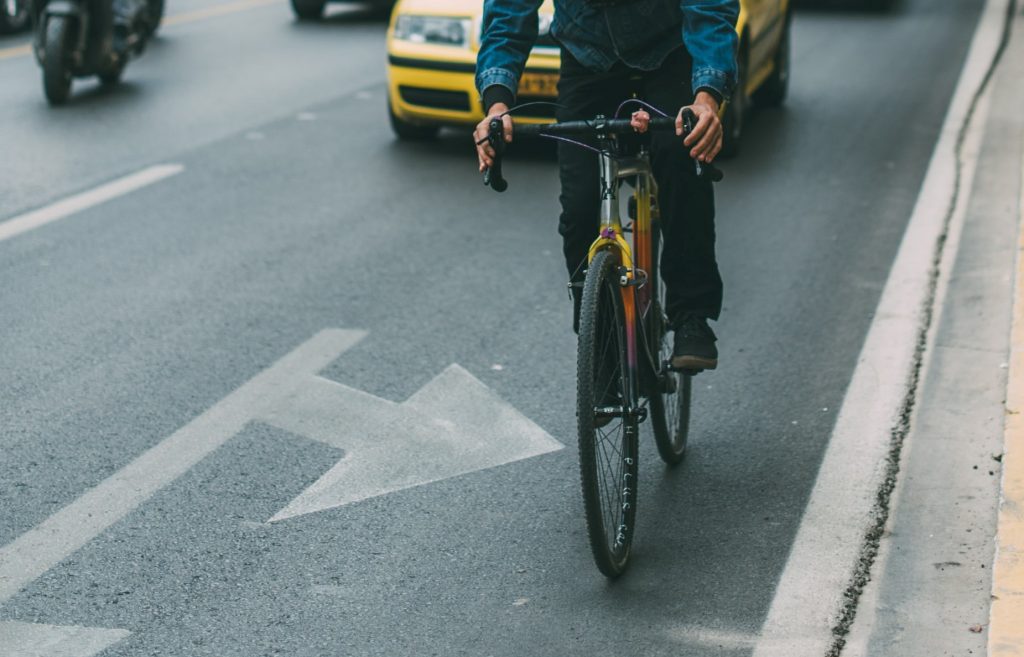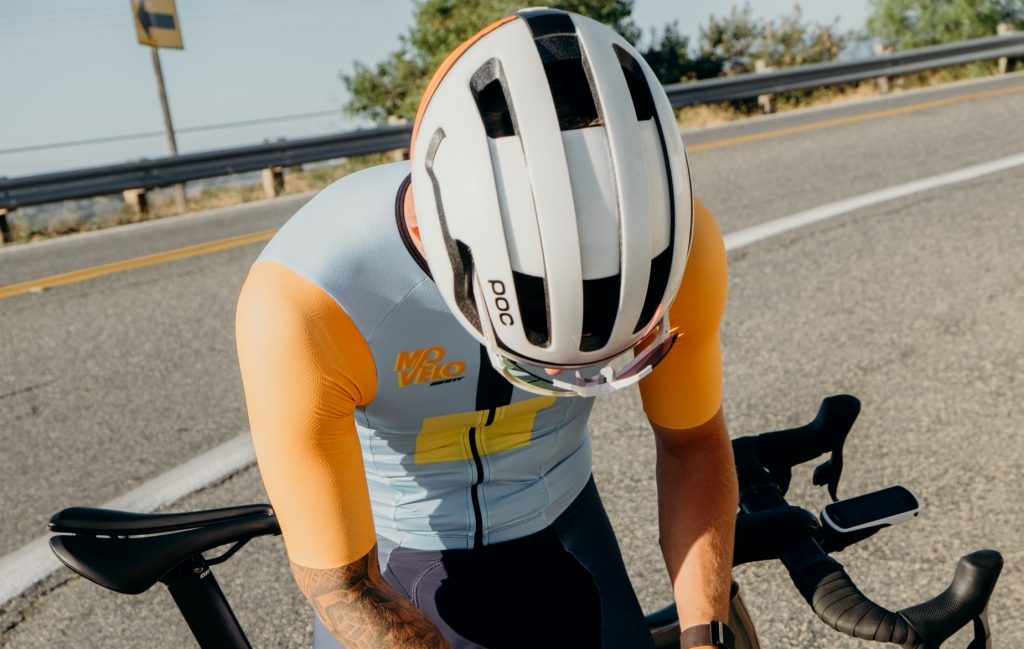“You either love spinning the pedals and watching scenery whiz by, or you don’t. And if you love it, not much can sour you on the idea of riding your bike” – Keith Mills.
Nothing feels better than that sense of freedom and the wind-in-your-hair thrill while you churn those pedals (obviously, you can’t feel the wind in your hair if you’re wearing a helmet, but you get the point).
When cycling, you attach to the ecosystem, and you become part of the surrounding instead of merely moving through it.
Becoming a biker can be daunting, but remember that every person you see on a bike was a rookie once. The least you could do is to hop on it and take it for a spin. However, there are a couple of things that you can do to smooth the beginner road biking experience and gather the equipment you need to make your cruising safer and more enjoyable. Check them out below.
What Is Road Biking?

Road biking is the old-school standard of cycling, typically designed to be practiced on paved surfaces such as smooth pavements and tarmac. While it is less comfortable and unstable on off-road trails, road biking can be a great way to get into a workout, shop, and commute to work, thanks to its ability to cover ground quickly.
However, when it comes to considering your options as a novice in cycling, the task can be tricky. The thing is, you have tons of options and a huge variety of bikes to choose from that sometimes it can be difficult to figure out which type is the right one for you.
If you still haven’t figured out which type of bike is the right one for you, ask yourself where you will ride and if the bike you’re about to buy is on par with your riding style.
How to Start Road Biking?

Whether you plan to use your bike for daily commuting, weekend trips, or exploring the countryside, there is always a wonderful experience in store for you. It will not only keep you fit and outdoorsy, but it will also save you money long term, boost your mood and keep you healthy. It will also help in absolving yourself of guilt over those extra slices of pizza you had for lunch.
Although some unwritten rules can make you feel overwhelmed at first, riding your bike should be fun, inspiring, and, most importantly, practical for your daily grind.
If you’re unsure whether to take the plunge into the world of biking and are confused about the different types of bikes and equipment, we have biking for beginners tips and tools to help you get started and make your riding safer and enjoyable.
Tip #1. Find a Bike That Fits You
Before you go to the cash register with your new bike, a better idea is to check whether the bike you’re about to buy actually fits your size. Buying bikes is the same as selecting clothes, and its functionality cannot be fully determined unless it fits your body. They come in so many different heights, configurations, handlebars, gears, and frame materials that it is so difficult to make an informed decision.
A bike that suits you poorly makes your muscles ache, your riding will be inefficient, and you will feel a general discomfort that might throw you off as a new bicycle enthusiast. Otherwise, choosing your bike should be all about comfort and personal choice.
There are some basic guidelines that help you ride in comfort and help you make the best choice.
Adjust your saddle height
It is common to see beginners struggle with discomfort and knee pain because they fail to set their saddle height correctly. Finding a sweet spot for your saddle height is pretty much the foundation of comfort, performance, and injury prevention. To check whether your saddle height is correctly set, place your heel on the pedal at a six o’clock position. If your knee is still bent, that means you need to increase the height. Conversely, if your heel doesn’t touch the pedal, you need to lower the saddle.
Adjust your frame size
Finding a perfect fit is more than just setting your saddle height correctly. Beyond the main contact points, adjusting the frame size is also important. Having the right frame size means you can put both feet flat on the ground so you can clear the top tube by at least one centimeter. Most road bikes nowadays have a mechanism that allows you to raise or lower the handlebars according to your preferred riding position.
Tip #2. Identify Your Riding Style
Choosing a bike that’s best for you largely comes down to understanding your biking style and how you plan to use the bike. There are many types of road bikes, and you will find the type of riding you do blends with more than one style.
For instance, if you plan to use the bike as a tool to commute, there are commuter bikes that offer an upright riding position for better visibility in busy towns. Or, if you’re interested in embarking on long journeys and spend hours in the saddle every day, you might want to consider buying a touring bike. The idea is that each road bike is purpose-built, and the style of your biking will dictate the type of bike to buy.
Never fear, though, as you become more experienced with biking, you will find your body type and skills will naturally associate with a particular style of riding. If you find that cruising down the street and across the river is what you like, buying a cruiser might be the best choice. If you can plunge ahead on a race with others, then sprinting may be your cup of tea, and buying a sportbike might be a perfect start for that.
Tip #3. Gather your Gears

Now that you have an idea about your personal bike preferences, you should find no trouble matching a bike with your riding style. However, finding your perfect riding style is only half of the equation. There are also some crucial accessories that you’ll need to ride safely and comfortably.
Bike riding can quickly become expensive if you’re a sucker for modern and stylish accessories. But for everyday commuting, buying reliable gear is more important than riding on expensive, lavish equipment. Here’s a list of minimum gear needed to get started:
Helmet
It’s better to be safe than sorry. A proper helmet helps to reduce the rotational forces and prevents head injuries in the event of a crash.
Lock
The loveliest bike to most thieves is the one that’s easiest to steal. You will need a lock if you want your bike to be there when you come back.
Racks
Awesome for touring or commuting. Sure, you can put your stuff in a backpack but carrying it on a separate rack makes your riding more comfortable.
Bike clothing
Another small adjustment that makes a big difference comfort-wise is getting yourself a pair of elastic cycling shorts. They reduce irritation, absorb moisture and work on par with your bike’s saddle. These are especially recommended for those who remain on the seat for extended periods.
Shoes
On longer journeys you may find your feet cramping and hurting from the constant pedaling. That’s why it is important to have a new set of cycling shoes as they reduce the likelihood of cramping and pain.
Pump
A portable pump attached to the bike is crucial in case you have a spongy tire during riding. You can also buy a hand pump which is a smaller pump and fits comfortably in your jersey pockets.
Lights
Lights are less needed if you plan to ride on bike paths and always in broad daylight. But it’s preferred to have a front light and a rear red flashing light to increase the visibility in traffic.
Biking is a perfect tool to stay mobile and explore the world around you. Besides the numerous biking benefits for your body, mind, and social life, biking is also one of the most useful forms of transportation, saving you time and money long term. For those just starting out with road biking, it is important to find a bike that fits your body and style and invest in essential equipment to make your riding safer and enjoyable.




